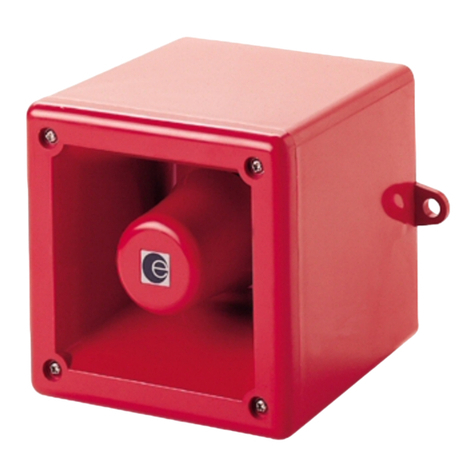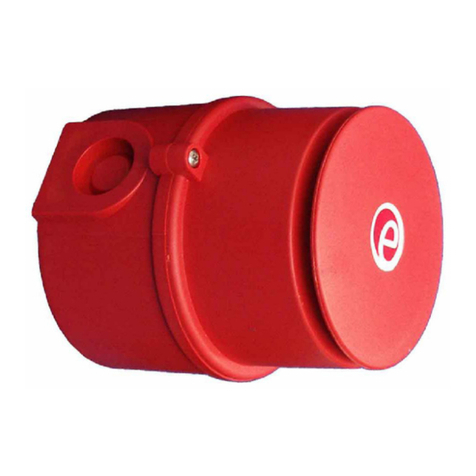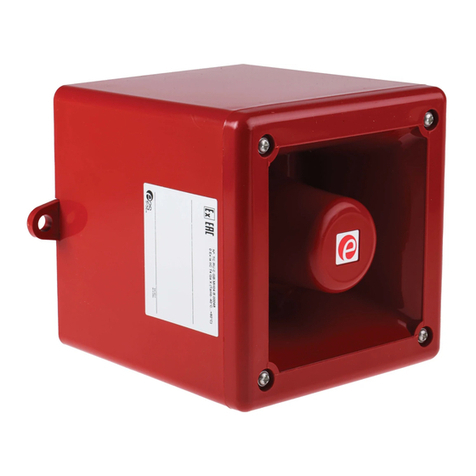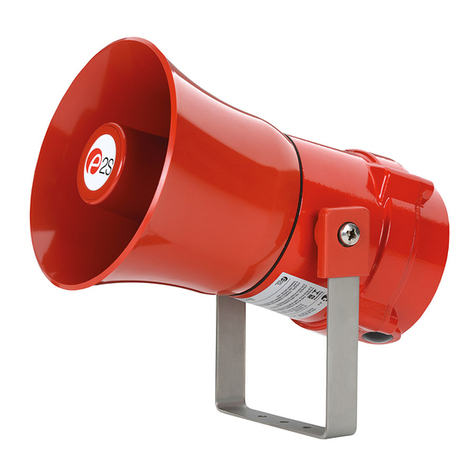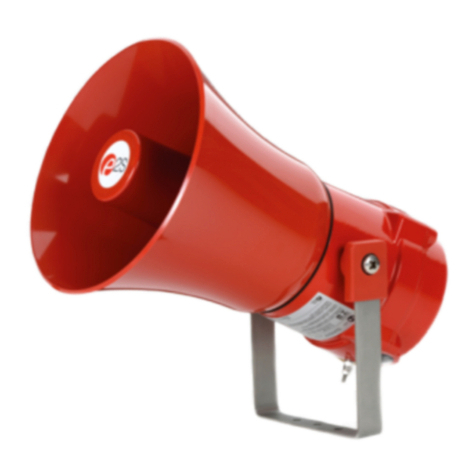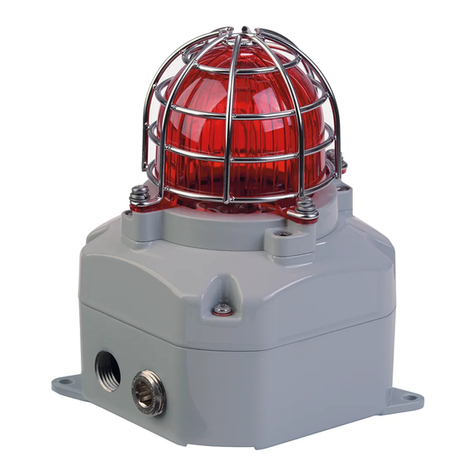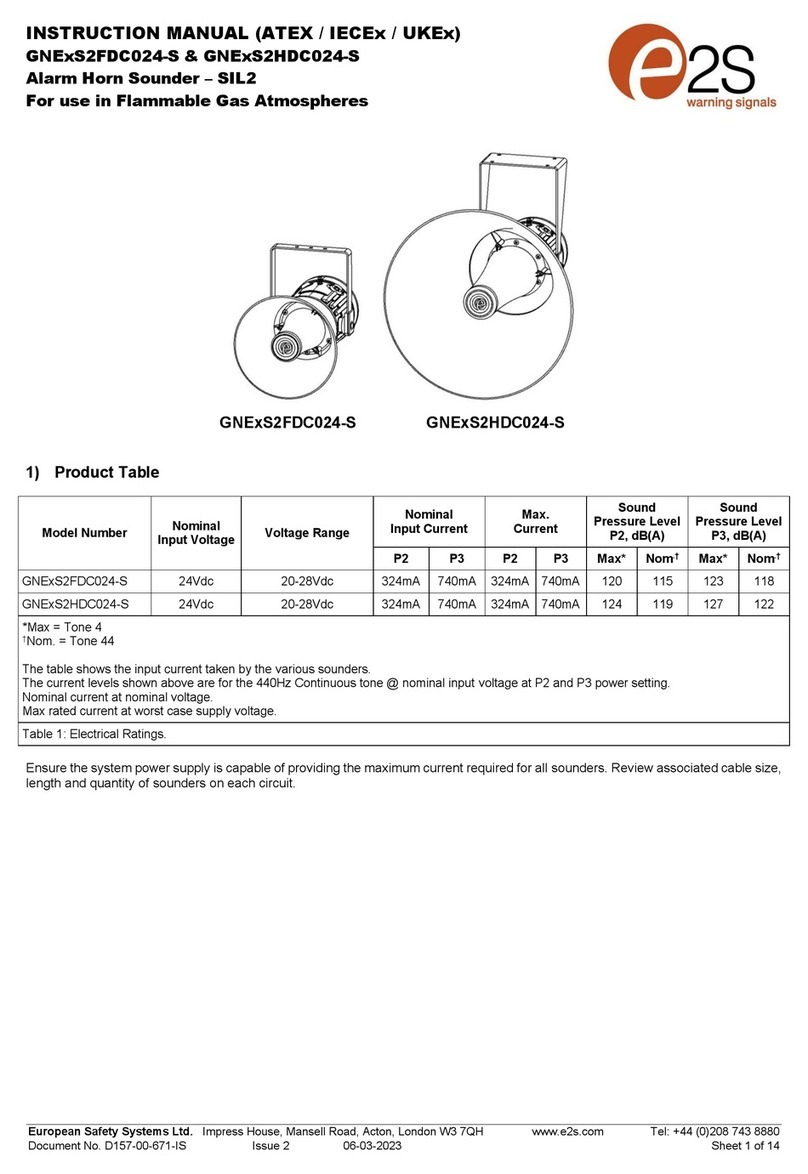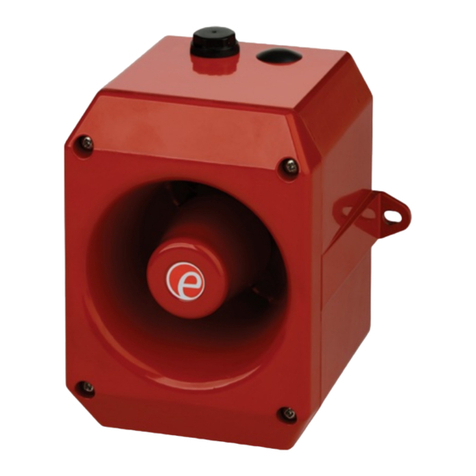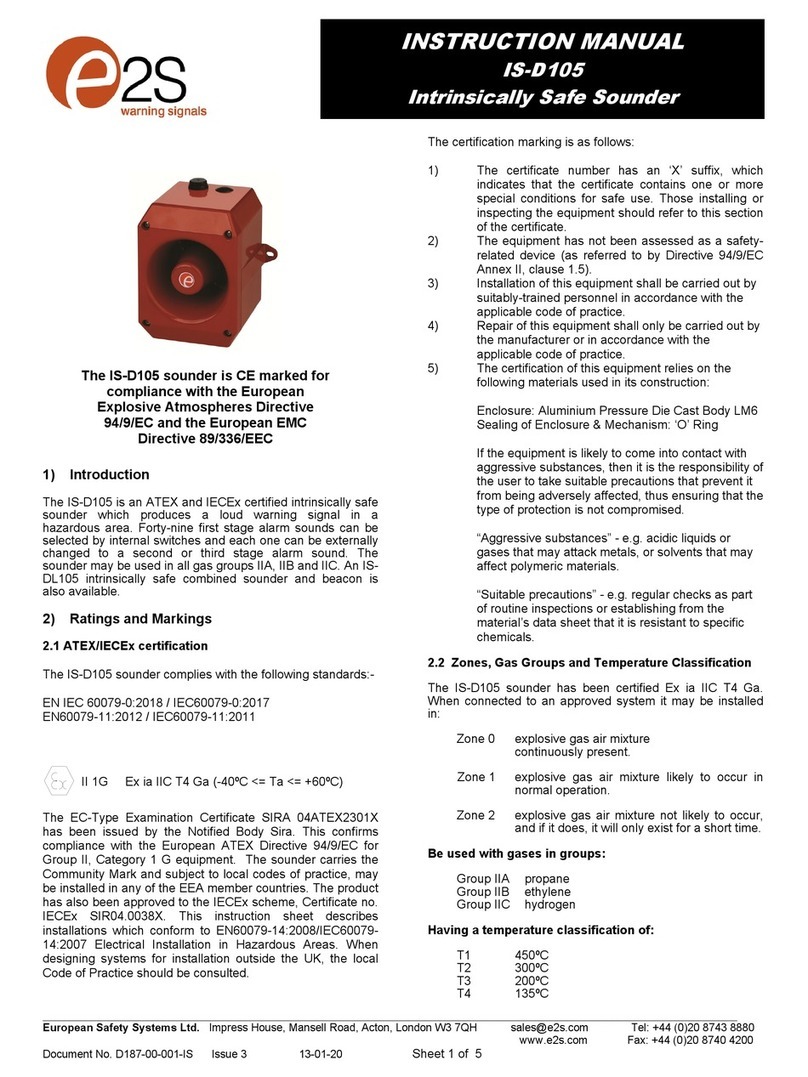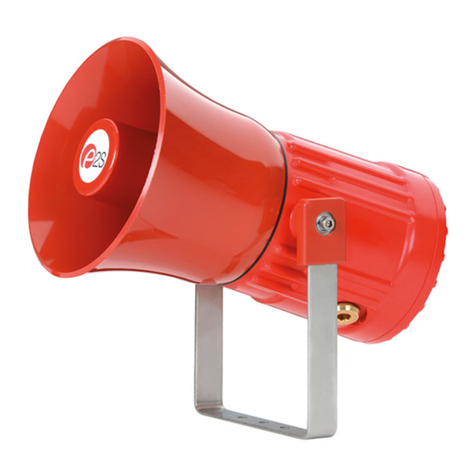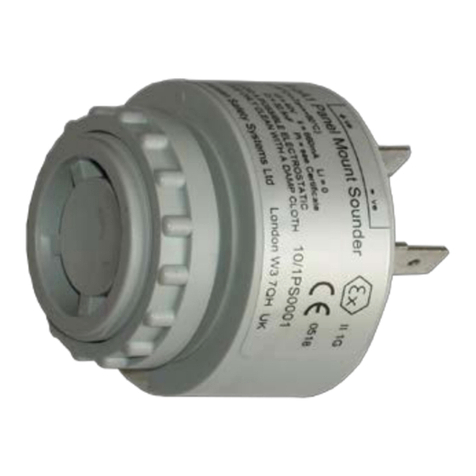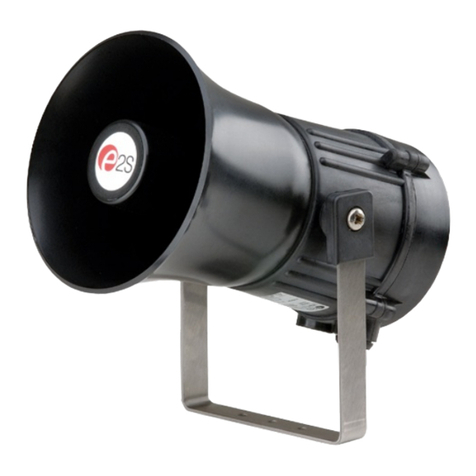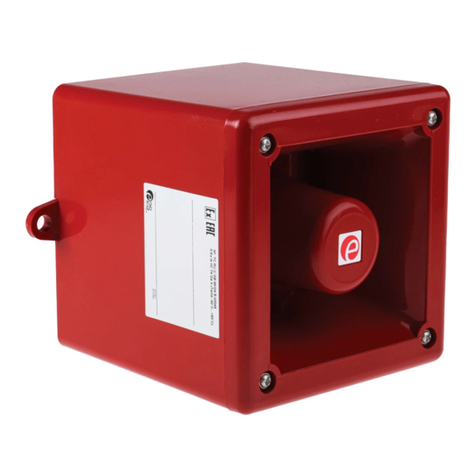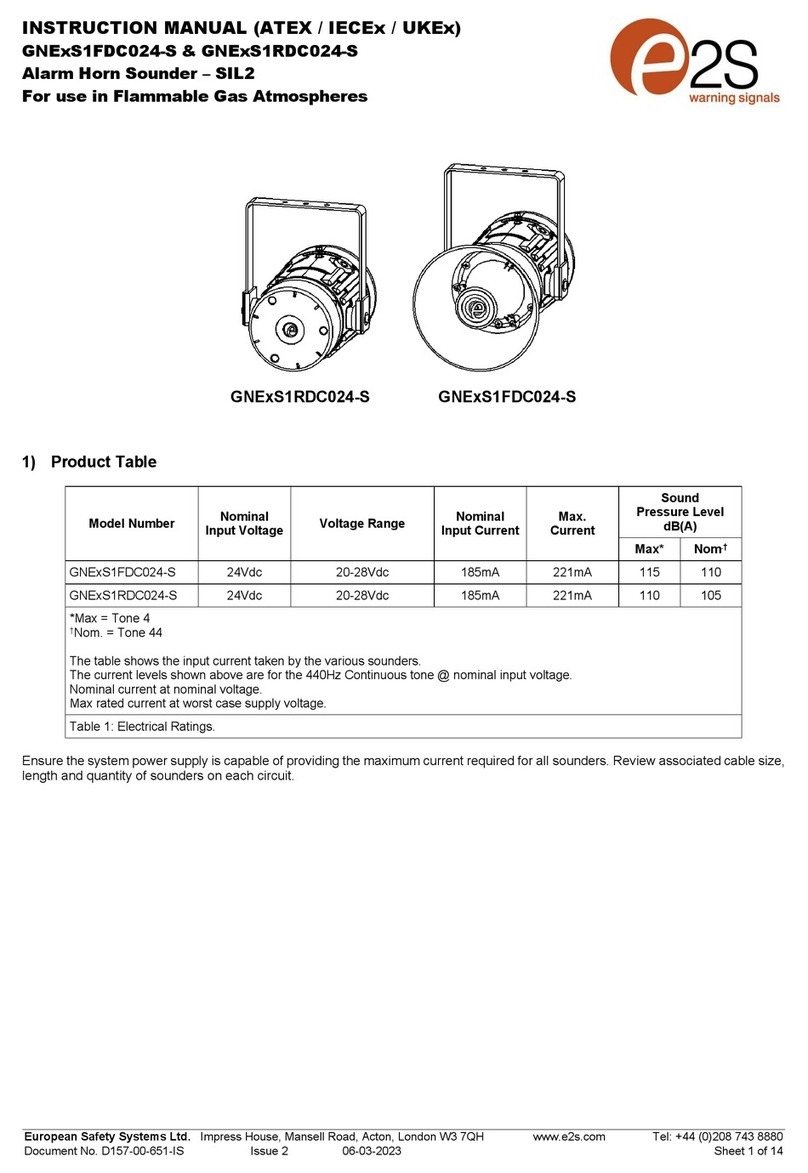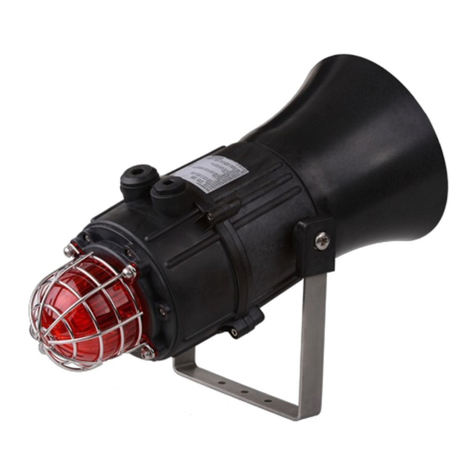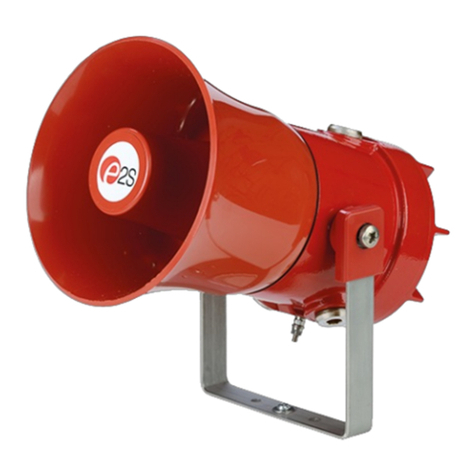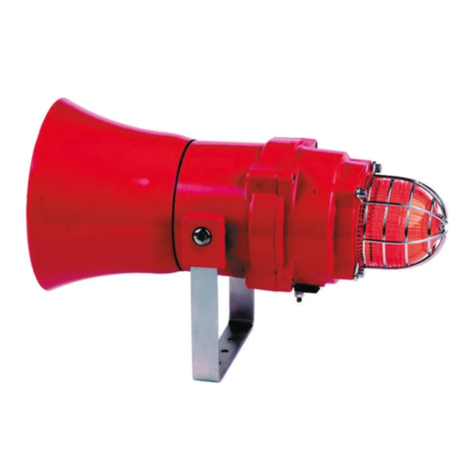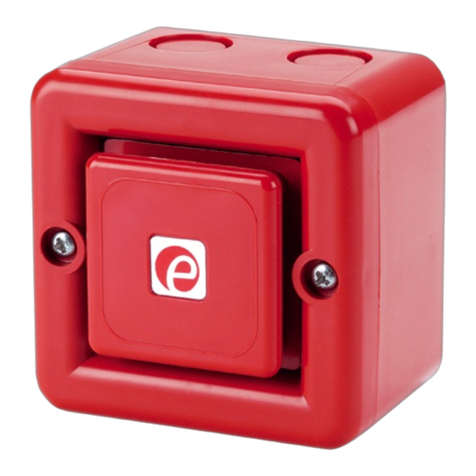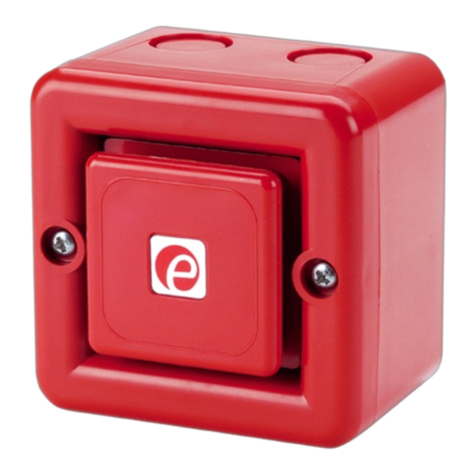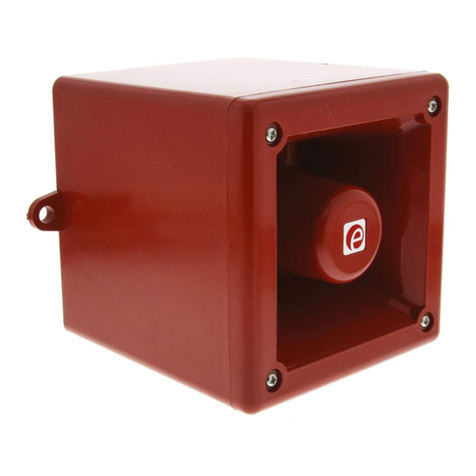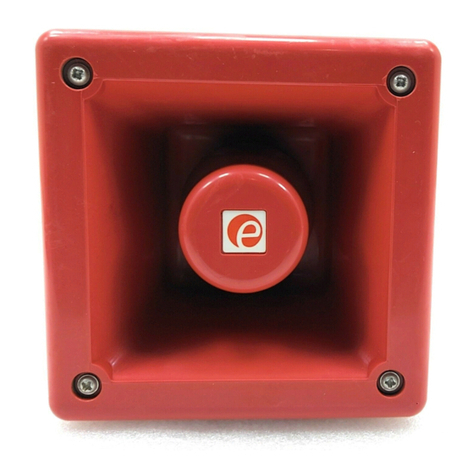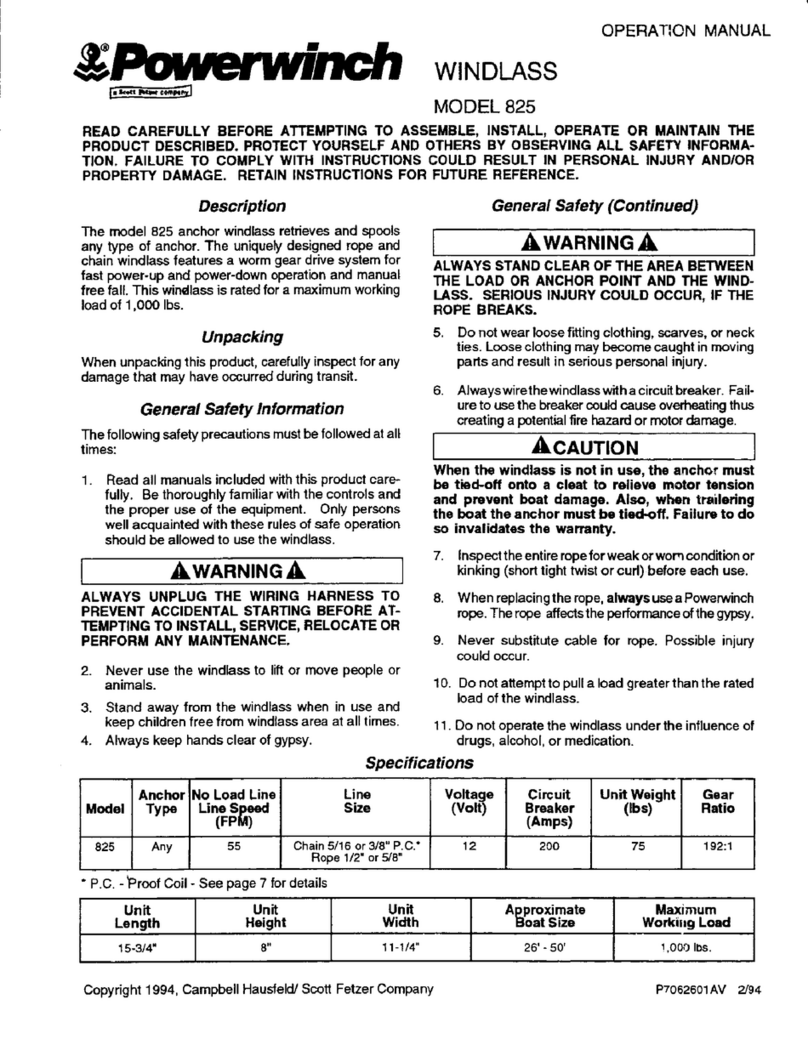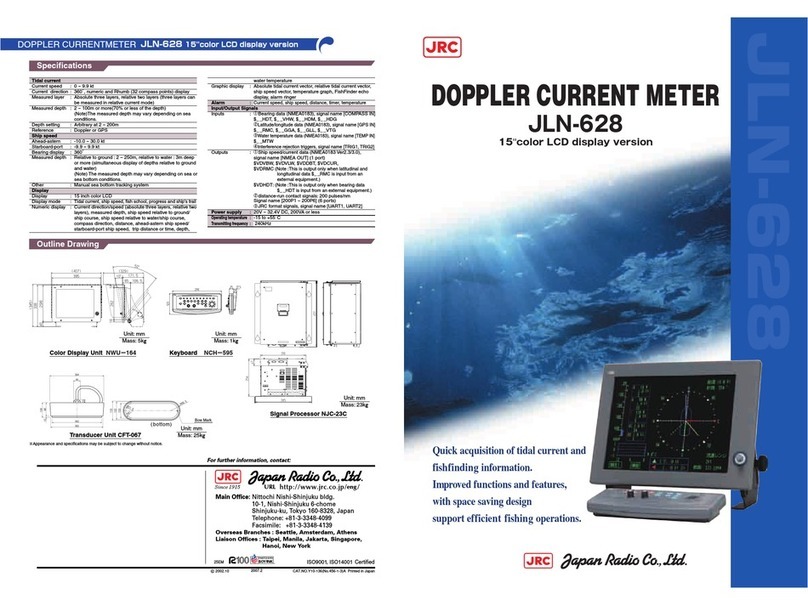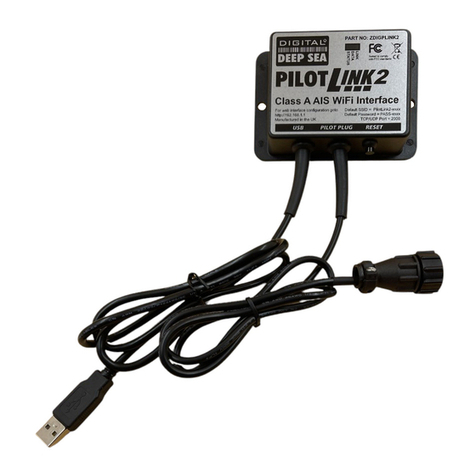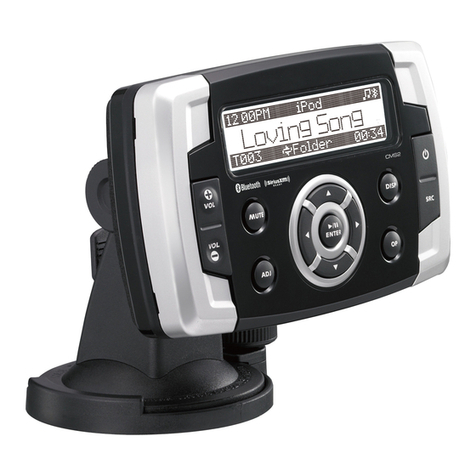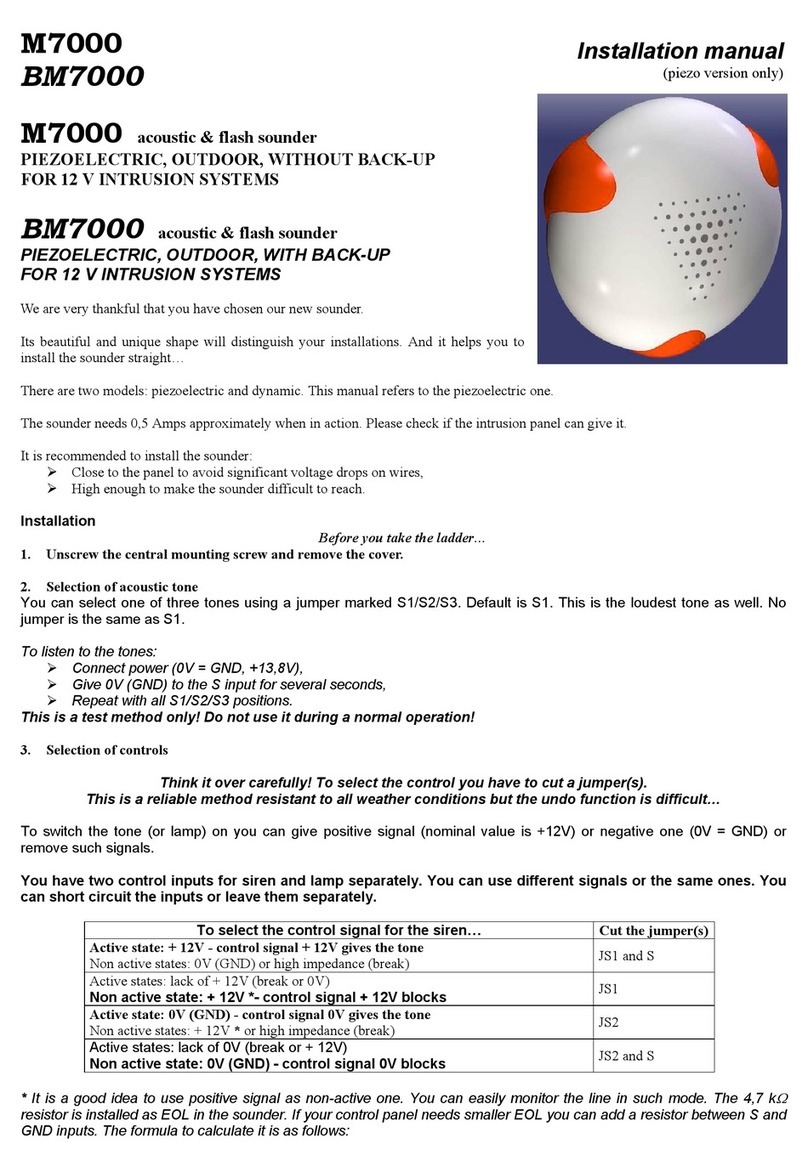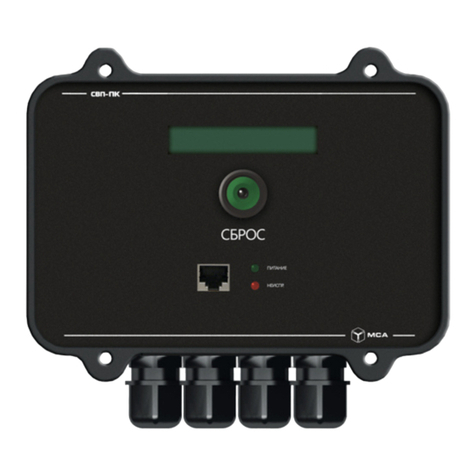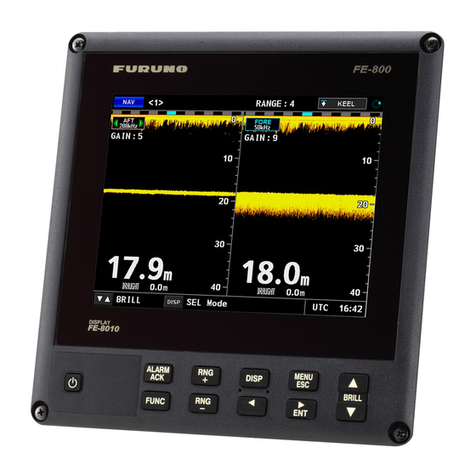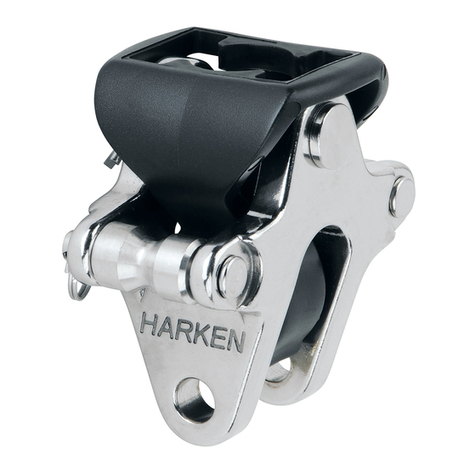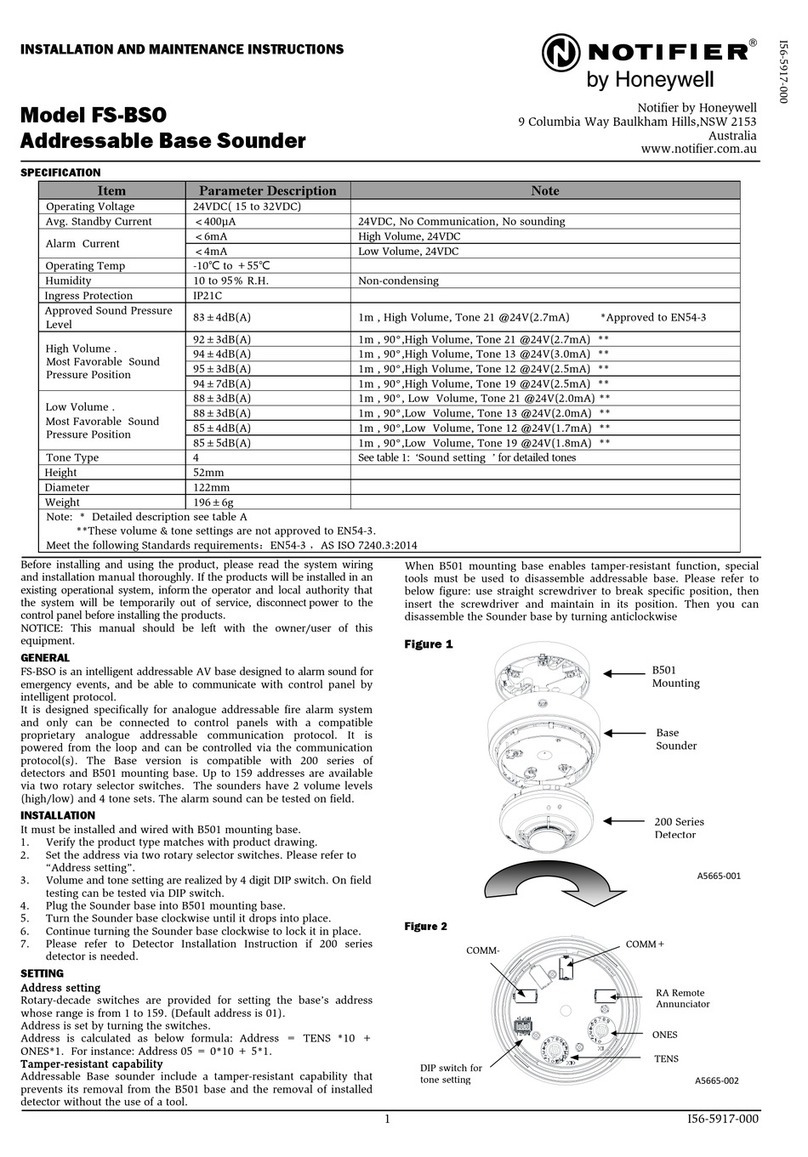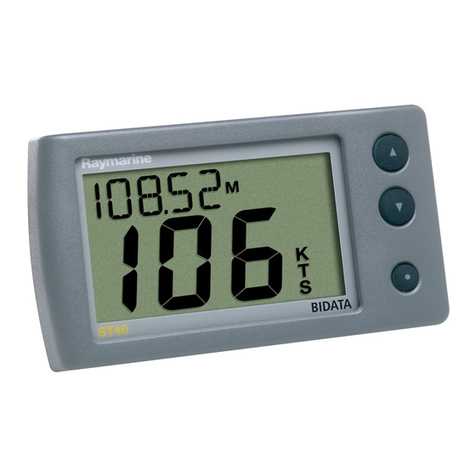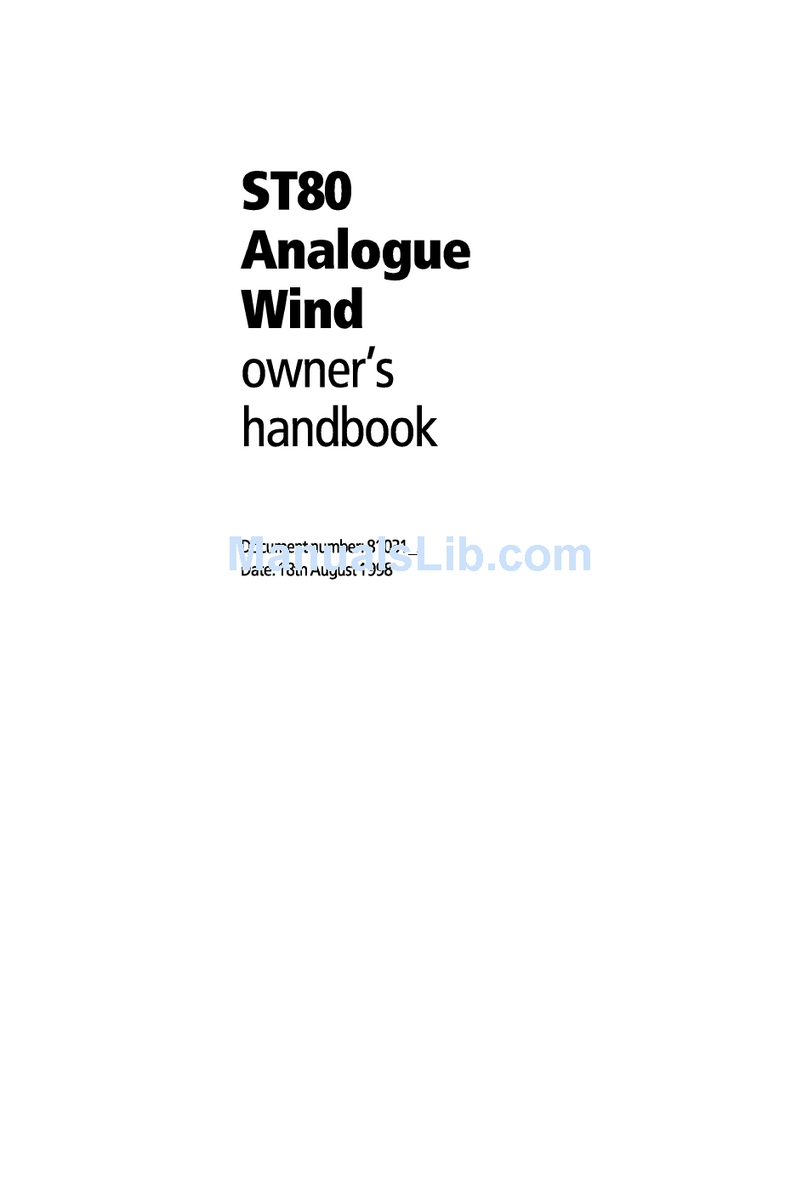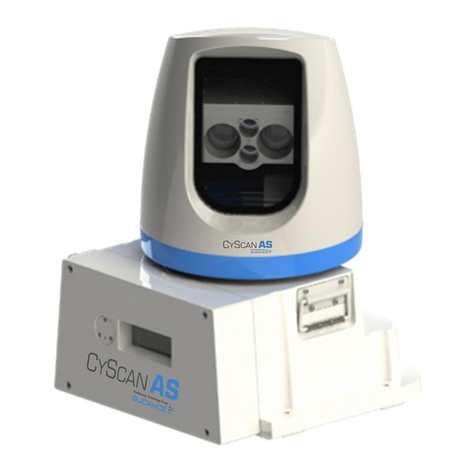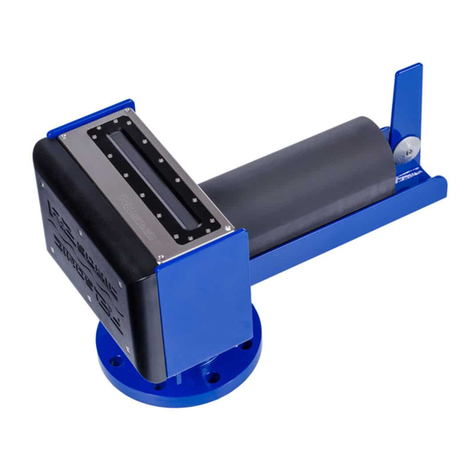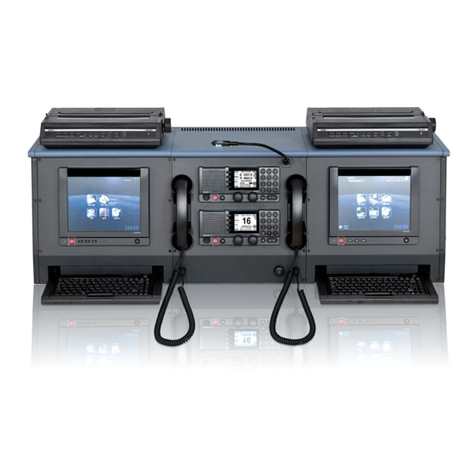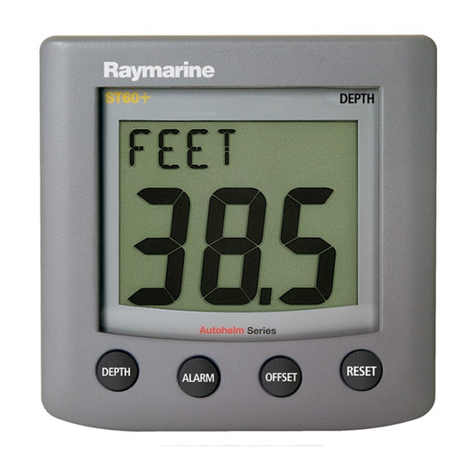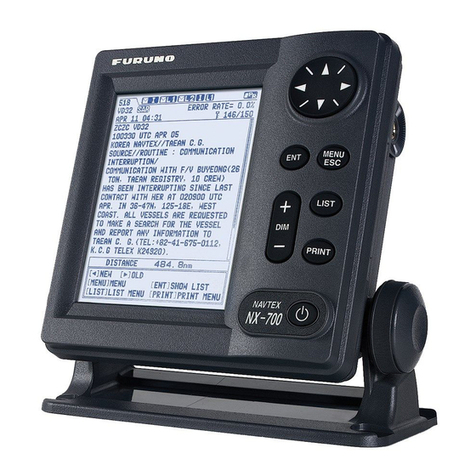
_______________________________________________________________________________________________________________________________
Europea
n Safet
y Syste
ms Ltd.
Impress House, Mansell Road, Acton, London W3 7QH sale[email protected] Tel: +44 (0)208 743 8880 www.e2s.com Fax: +44 (0)208 740 4200
Document No. D157-00-001 Issue 5 25-06-2020 Sheet 1 of 7 (1)
INSTRUCTION MANUAL (ATEX / IECEx
GNExS2 and GNExS1 Flameproof Sounders
1) Introduction
The GNExS2 and GNExS1 are flameproof sounders which
are certified to meet the requirements of the ATEX directive
94/9/EC and the IECEx scheme. The sounders produce loud
warning signals and can be used in hazardous areas where
potentially flammable atmospheres may be present. Sixty-
four different stage alarm sounds can be selected by internal
switches to independently set the first stage and second
stage, the third and fourth stages are externally changed (see
tone table on Page 5/6). The GNExS2 unit produces output
levels in the 117dB (A) range and the GNExS1 unit produces
output levels in the 110dB (A) range.
The sounders are Group II, EPL (equipment protection level)
Gb. Dependant on unit type and ambient temperature the
equipment is certified ‘Ex db IIC Gb’ and as such may be
used in Zones 1 and 2 with flammable gases and vapours
with apparatus groups IIA, IIB & IIC and temperature
Classifications of T1, T2, T3 and T4 dependant on ambient
temperature, see marking codes in section 2.
The equipment is also certified ‘Ex db IIB Gb’ and as such
may be used in Zones 1 and 2 with flammable gases and
vapours with apparatus groups IIA & IIB and temperature
Classifications of T1, T2, T3, T4, T5 and T6 dependant on
ambient temperature, see marking codes in section 2.
2) Marking
All units have a rating label, which carries the following
important information:-
Unit Type No. GNExS2 or GNExS1
Input Voltage: GNExS1 GNExS2
10-30Vdc or 48Vdc 10-30Vdc or 48Vdc
100 - 260Vac/dc 100 - 260Vac
Codes: GNExS1
Ex db IIC T4 Gb for Ta –60°C to +50°C
Ex db IIC T3 Gb for Ta –60°C to +70°C
Ex db IIB T6 Gb for Ta –60°C to +50°C
Ex db IIB T5 Gb for Ta –60°C to +65°C
Ex db IIB T4 Gb for Ta –60°C to +70°C
Codes: GNExS2
Ex db IIC T4 Gb for Ta –60°C to +50°C
Ex db IIC T3 Gb for Ta –60°C to +58°C
Ex db IIB T6 Gb for Ta –60°C to +50°C
Ex db IIB T5 Gb for Ta –60°C to +58°C
Certificate No. SIRA 13ATEX1139X
IECEx SIR 13.0029X
“Warnings”
DO NOT OPEN WHEN ENERGISED
DO NOT OPEN WHEN AN EXPLOSIVE ATMOSPHERE MAY BE
PRESENT
ELECTROSTATIC HAZARD - CLEAN ONLY WITH A DAMP CLOTH
IF TEMPERATURE EXCEEDS 70ºC AT ENTRY OR 80ºC AT
BRANCHING POINT USE SUITABLY RATED CABLE AND CABLE
GLANDS
Year of Construction /
Serial No. i.e. 20 / 1GS23000001
3) Type Approval Standards
The sounders have an EC Type Examination and IECEx
certificates issued by KEMA and have been approved to the
following standards:-
EN60079-0:2018 EN IEC60079-0:2018 General Requirements
EN60079-1:2014 A/C:2018 EN 60079-1:2014 ed. 7
Flameproof Enclosure ‘d’
4) Special Conditions for Safe Use
4.1) Installation
The sounders must be installed in accordance with the latest
issues of the relevant parts of the EN 60079 and IEC60079
standards – Selection, Installation and maintenance of
electrical apparatus for use in potentially explosive
atmospheres (other than mining applications or explosive
processing and manufacture):-
EN60079-14:2008 Electrical Installations in Hazardous
IEC60079-14:2007 (Ed4) Areas (other than mines)
EN60079-10-1:2009 Classification of Areas, Gas
Atmosphere
IEC60079-10:2008 (Ed1)
The installation of the units must also be in accordance with
any local codes that may apply and should only be carried
out by a competent electrical engineer who has the
necessary training.
4.2) Specific Conditions
Flameproof joints shall not be repaired or modified in any way
(See figures 1 & 2 for location of flameproof joints).
The enclosure is non-conducting and under certain extreme
conditions may generate an ignition capable level of
electrostatic charge. The user shall ensure that the
equipment is not installed in a location where it may be
subjected to extreme conditions (such as high-pressure
steam) which might cause a build-up of electrostatic charge
on non-conducting surfaces.
2813
II 2G
Epsilon x:
Equipment Group
and Category:
CE Marking:
Notified Body No.
